
9 tips for Driving to France from Oslo
If you’re planning to stay for a bit in France, taking your own car can be a great option. It can be tiring, but it comes with some advantages too. Here are 9 key points to keep in mind when planning a road trip to southern France. The most important thing? Deciding on your route. There are quite a few factors to consider
1. Plan your route
There are many different ways to drive to France, and if you’re leaving from Oslo, the first question is whether to start with a ferry.
Ferry to Copenhagen or Kiel
Pros: Avoids long drives through Sweden (and potentially Denmark), saving time and effort. The ferry gives you a chance to rest and enjoy onboard facilities. It can be a mini-adventure in itself. Many people love the “Danish boat” or the Kiel ferry.
Cons: The ferry can be pricier than driving, and you’re tied to its schedule. The Kiel ferry doesn’t necessarily save time; you have to check in around 1 PM on departure day and don’t disembark until 10-11 AM the next day. We often find it faster to drive and avoid taking a day off for travel.
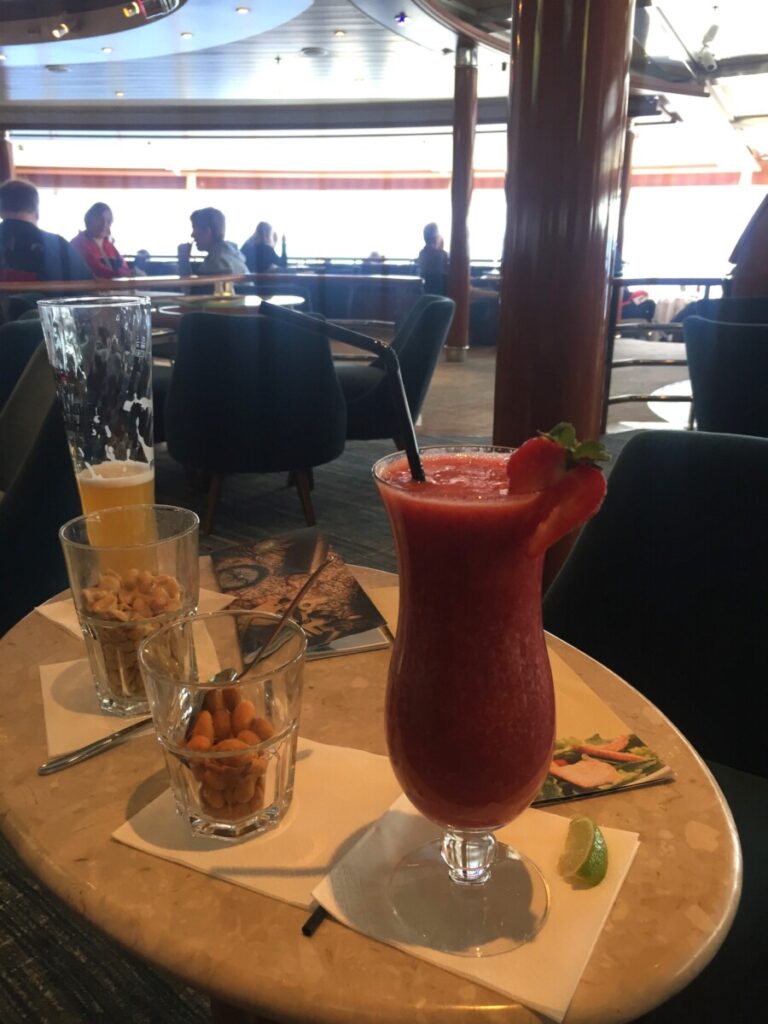
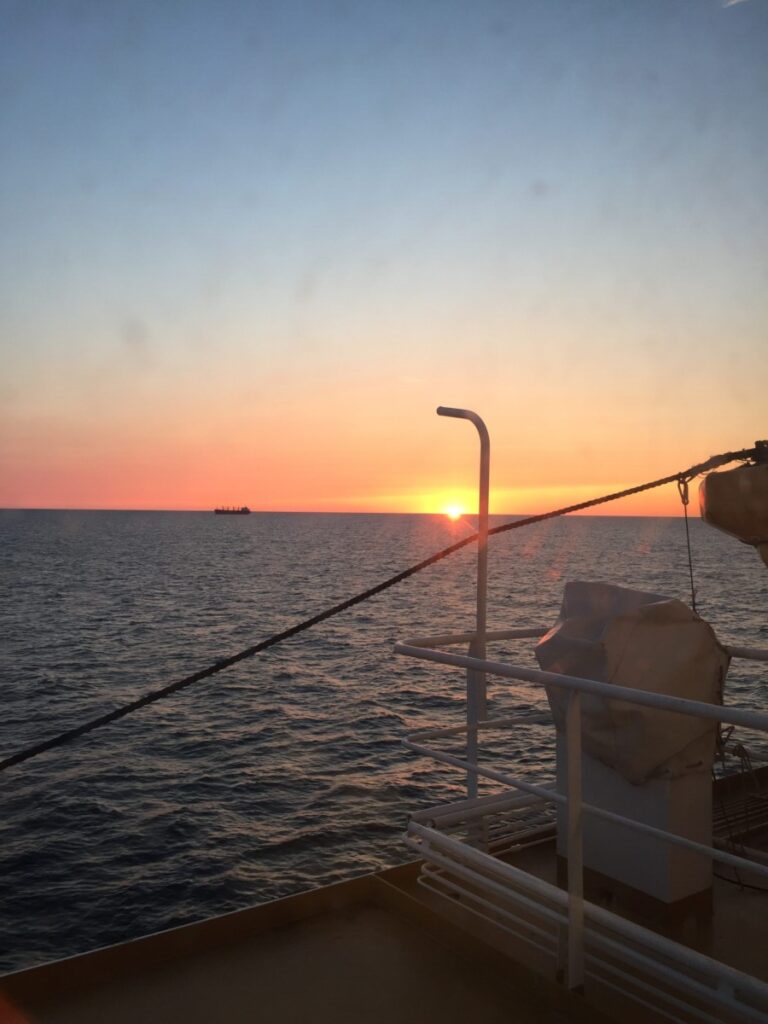
Ferry from Gothenburg to Denmark
There’s also a ferry from Gothenburg in Sweden to Frederikshavn in Denmark.
Pros: A shorter ferry crossing compared to Oslo, skipping a long drive through Sweden. It can be a good balance between time and cost.
Cons: The ferry schedule might not align with your plans. In our case, the ferry company once canceled our early morning departure and rebooked us on a ferry at noon, way too late for our schedule. Ferry costs might also exceed fuel costs for driving through Sweden.
If timing is crucial, compare ferry schedules with driving times to find the best fit for your trip.
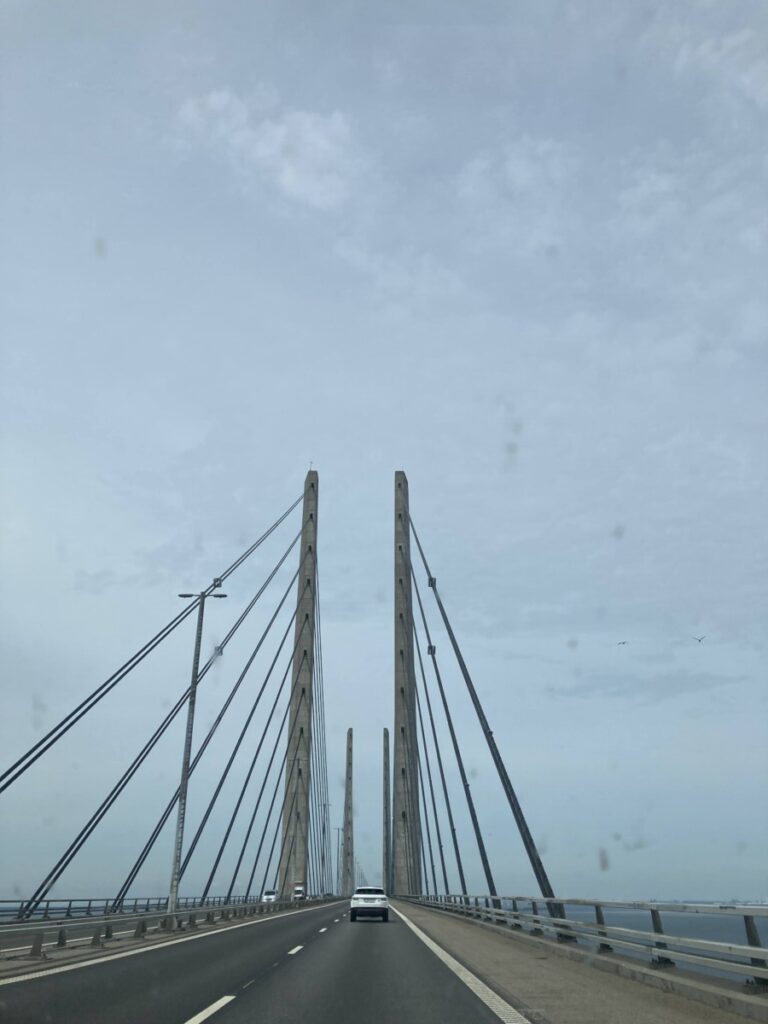
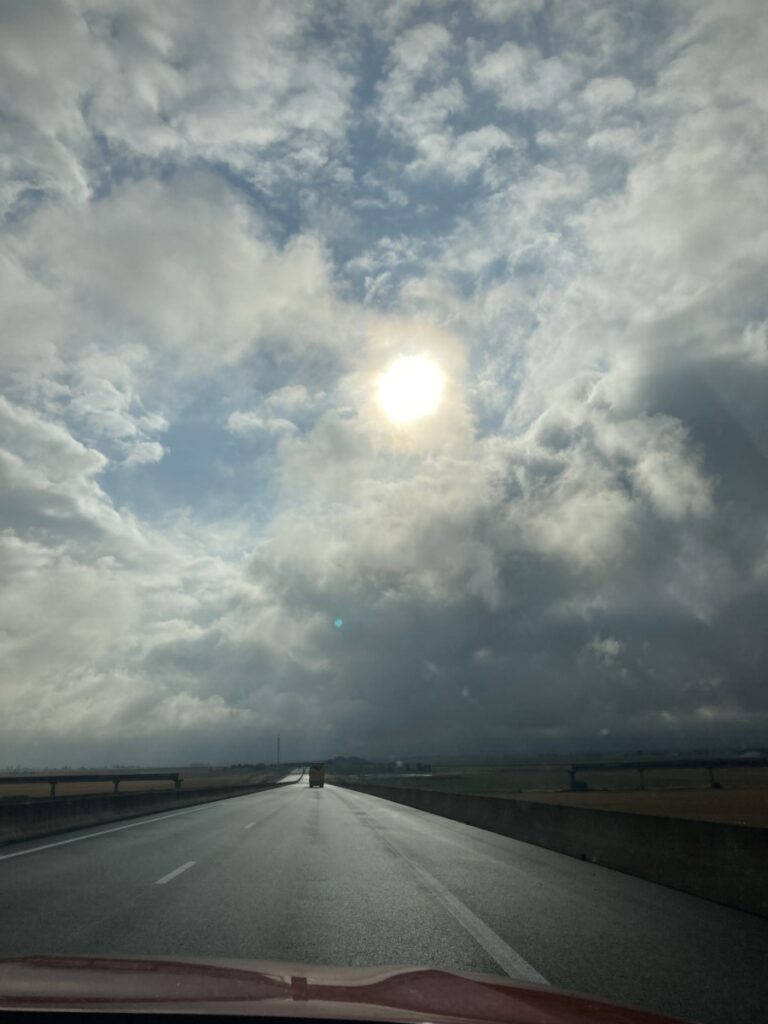
Ferry from Denmark to Germany
We have always on our way home taken the ferry from Germany to Denmark. We also tried doing that on our way down, but since we had not prebooked the ferry, there were no more spaces. I advice to book a flexible ticket to secure a spot.
Driving Through Germany and France
We’ve driven to France multiple times and prefer heading west into France quickly rather than driving long distances through Germany. Here’s why:
Germany: Autobahns allow for higher speeds, which can save time. But, there’s always roadwork and traffic jams, which can create massive delays. Plus, you have to pay to use restrooms at German gas stations, a small but annoying detail.
France: There are toll roads, which add costs, but you avoid the endless German roadwork. And you won’t have to deal with reckless German drivers doing 200 km/h. Better food at rest stops and simply being in France are extra perks in my book.
If you can, plan to drive through Germany and France on weekends. Trucks aren’t allowed on motorways then, making the drive much smoother.
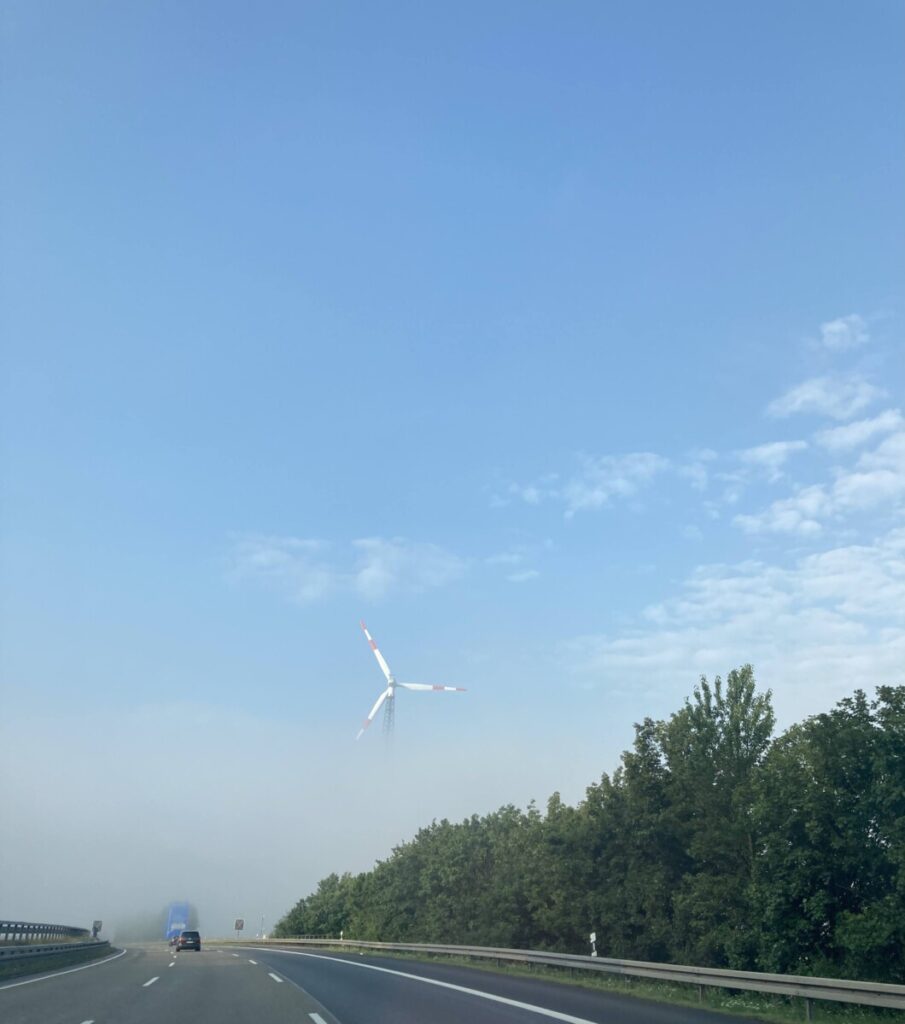
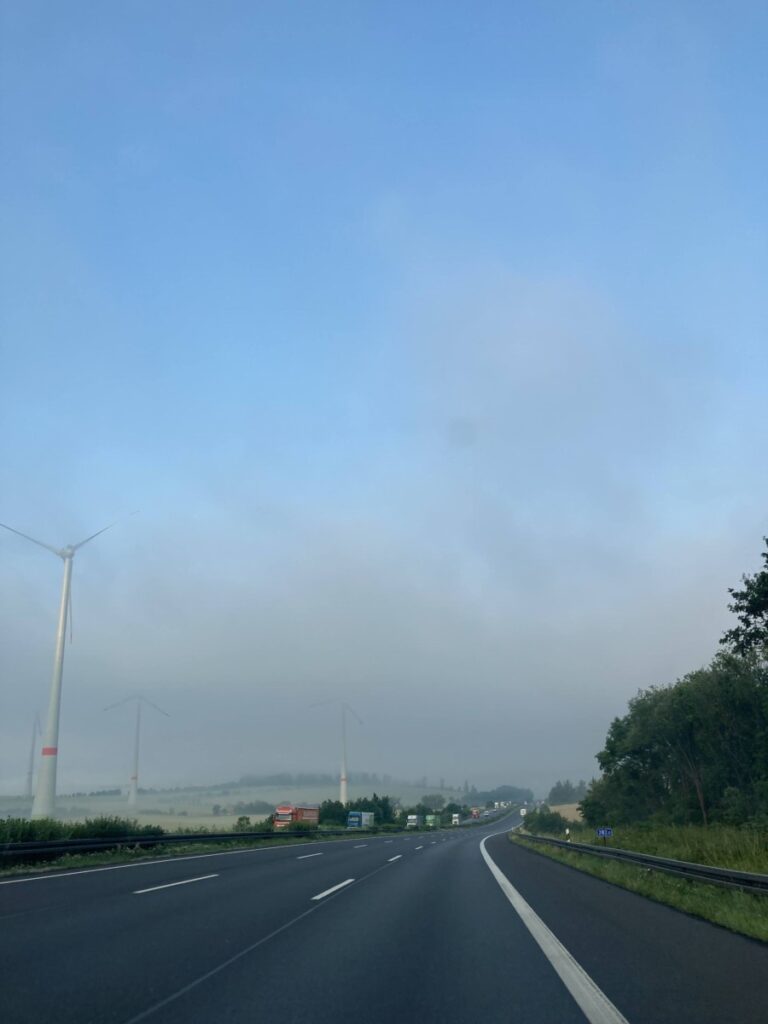
Traffic in France is rarely an issue, except for certain peak times, like Sundays in late July when everyone is returning from vacation. Major bottlenecks occur around Lyon allthough the new road going around the city center helps. Check the French school holiday calendar if you plan to drive home on a Sunday and allow extra time if you’re on the A7 highway.
Many travelers refuel in Luxembourg, where gas is cheap. It’s also fun to visit such a tiny country. On our first trip, we spent a night there and enjoyed a lovely dinner in the city center.
2. Accommodation Tips
We’ve tried both booking hotels in advance and finding places on the go. It’s nice to have flexibility, but searching for accommodation while navigating can be stressful. You’ll often have to choose between boring roadside hotels or charming spots a bit further off the highway.
If you expect a late arrival, check if the hotel has a restaurant or if there’s one nearby. Not all hotels have 24-hour receptions, so inform them if you’ll be arriving late.
We’ve stayed in both luxurious hotels with pools and rather grim, outdated hotels in the middle of nowhere. Some of them were downright eerie!
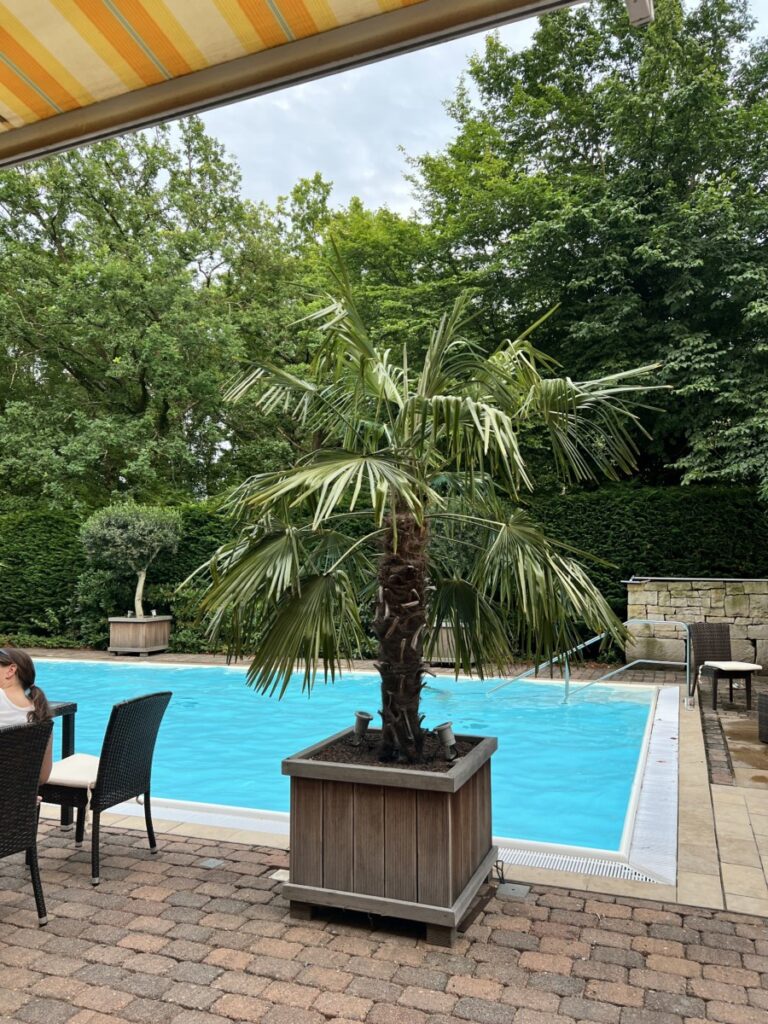

To make things more enjoyable, we’ve also planned overnight stops in cute towns. Eguisheim in Alsace was one such stop. We arrived late but explored the tiny village the next morning. Smaller towns tend to be more manageable and are usually a short drive from the motorway.
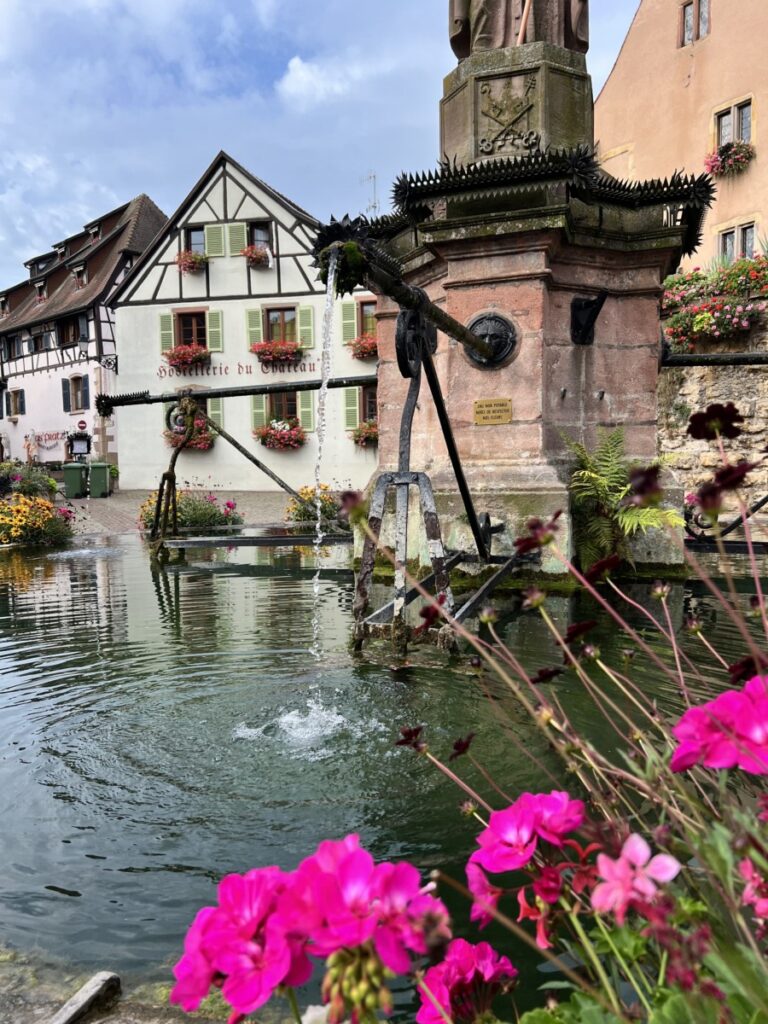
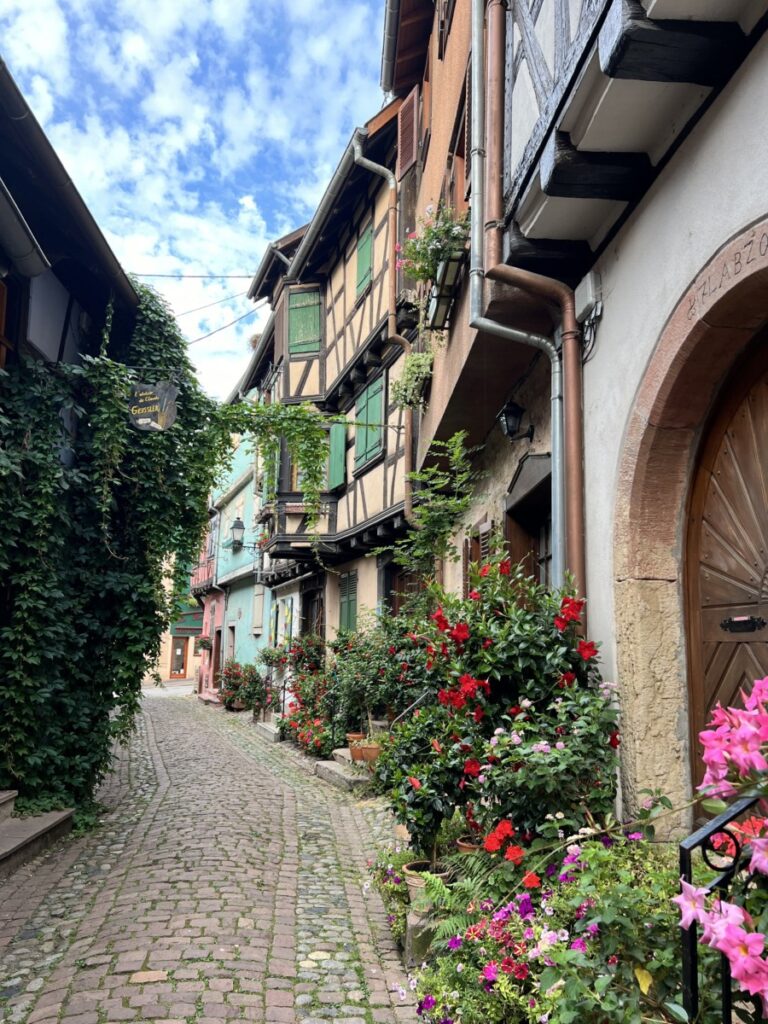
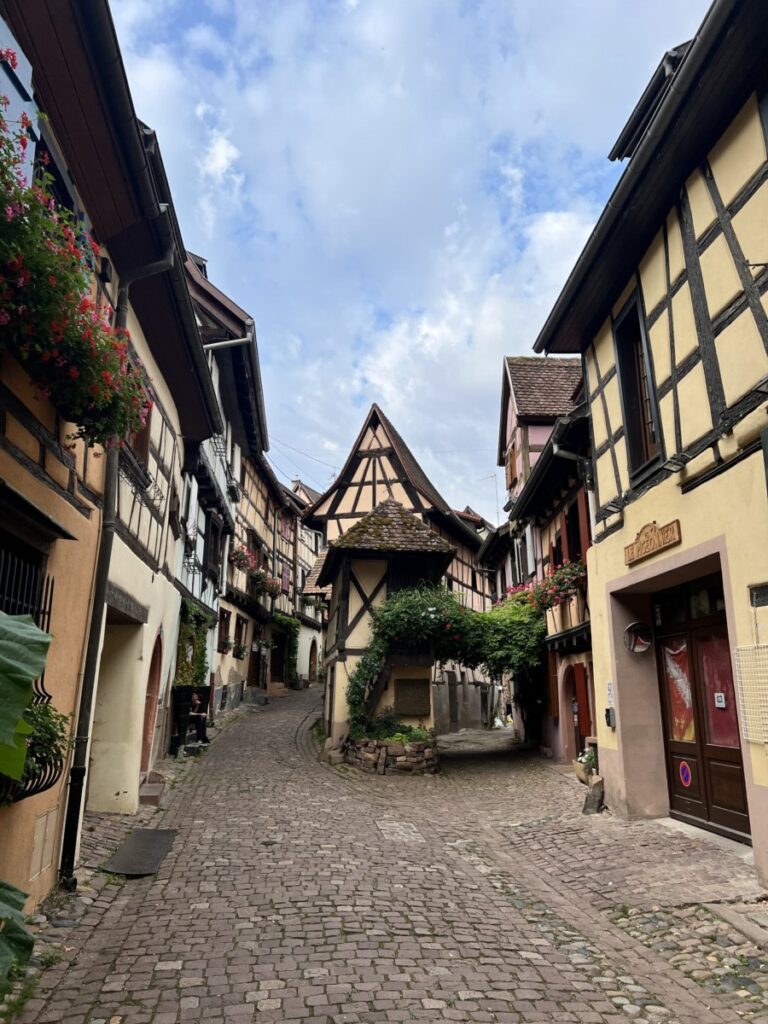
Websites like Booking.com and Hotels.com are great for finding hotels, but I recommend booking directly with the hotel whenever possible.
We have ended up in the area around Hannover, Göttingen and Kassel while driving from Oslo when we have had just 1 night stay. That is around halfway to our place in Fitou.
3. Consider a Two-Night Stop
If you have time, push hard on the first day and then spend two nights somewhere. This gives you a full day to relax and explore a new city without driving.
Some great two-night stop options:
- Basel, Switzerland – A charming city we visited by train.
- Heidelberg, Germany – Germany’s oldest university town with a beautiful riverside castle.
- Reims, France – Famous for its stunning cathedral and Champagne production.
- Lyon, France – A foodie paradise with lots of history.
- Dijon, France – Known for its mustard and worth a visit.
- Colmar & Strasbourg, France – Alsace’s most picturesque towns, full of canals and half-timbered house


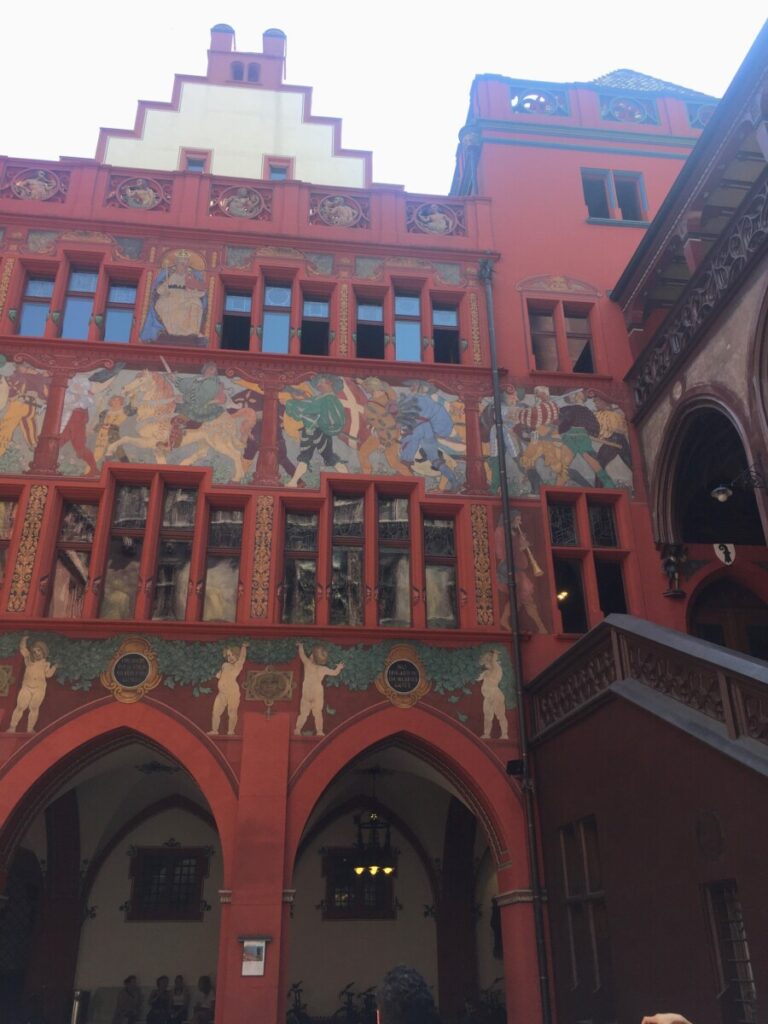
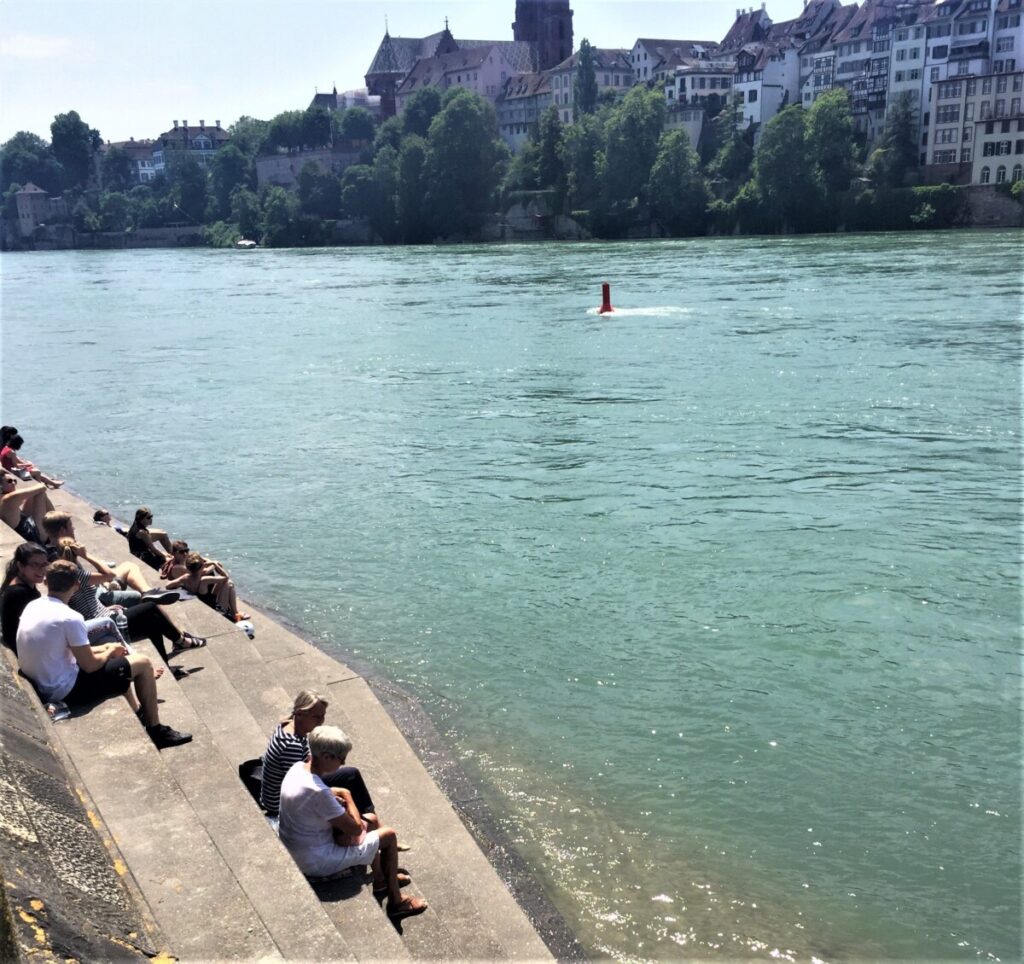
4. Scenic Routes
Consider taking a “scenic detour”:
- Moselle Valley – Famous for steep vineyards along the Moselle River. This route naturally leads into Luxembourg.
- Alsace Wine Route – A stunning drive through charming villages and vineyards.
- Loire Valley – Famous for its castles and landscapes. It’s further west but absolutely worth it!
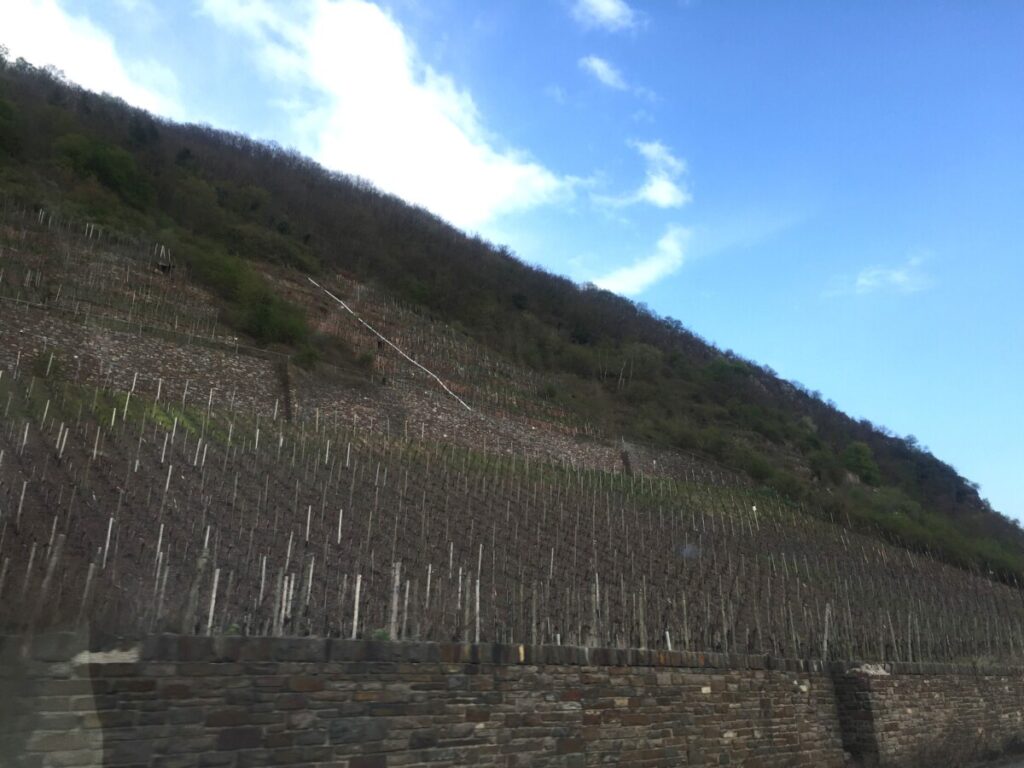
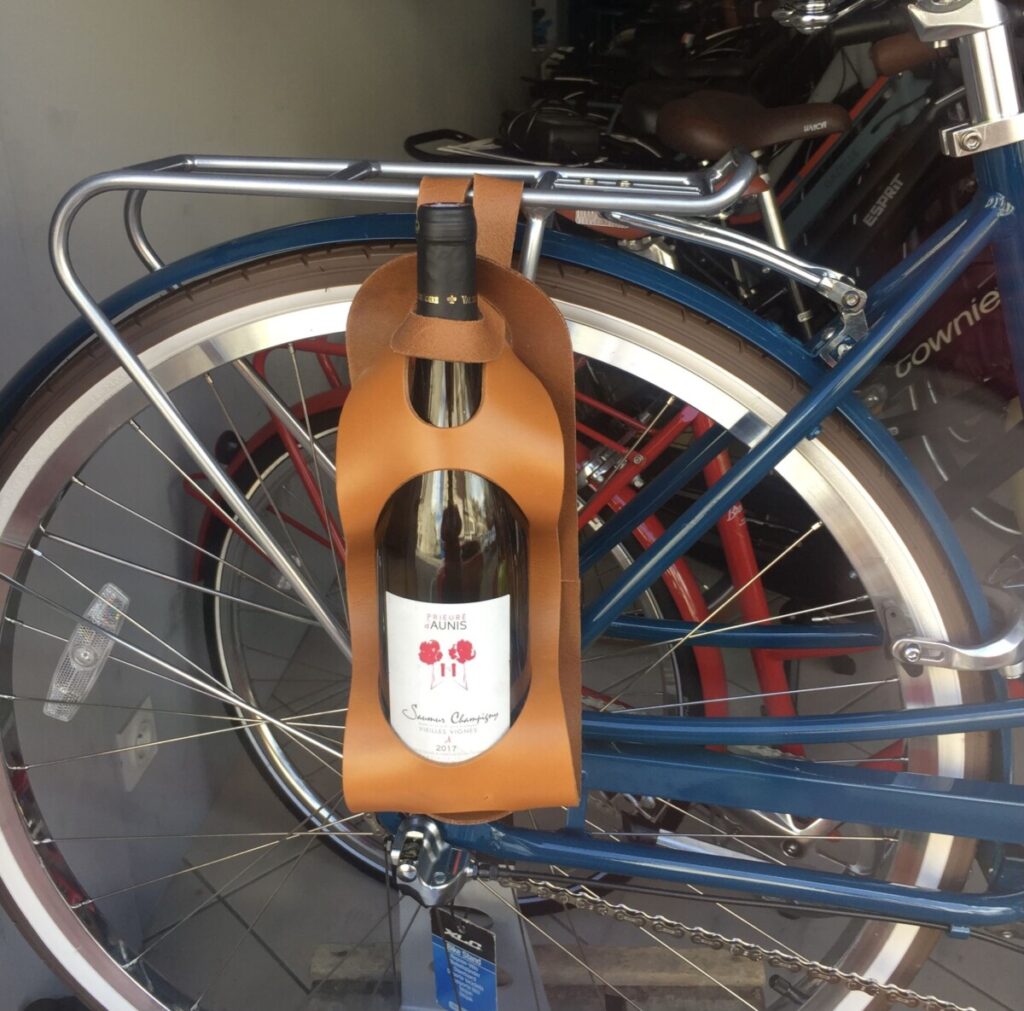
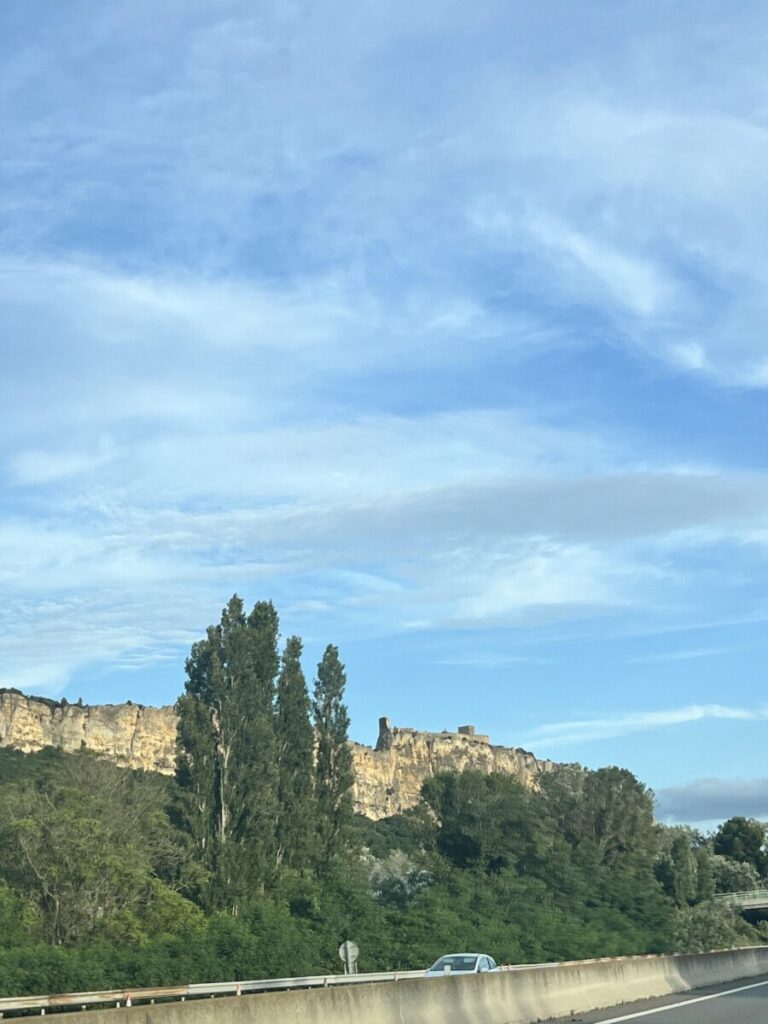
5. Stay Flexible
Having a car gives you ultimate flexibility. Look for interesting stops along the way. Both Germany and France have highway signs pointing out local attractions. A bit of spontaneity makes the trip more fun so allow a little time for detours
Why not stop at Pont du Gard, the majestic romane aquaduct in the southern part of the Rhônen valley.
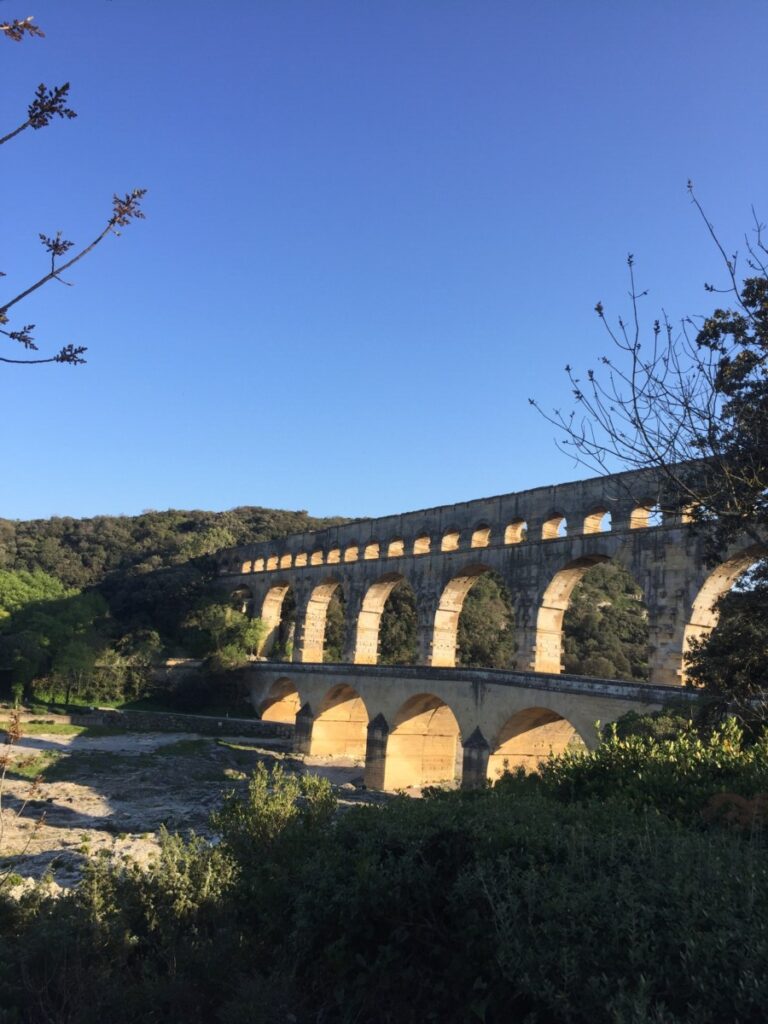
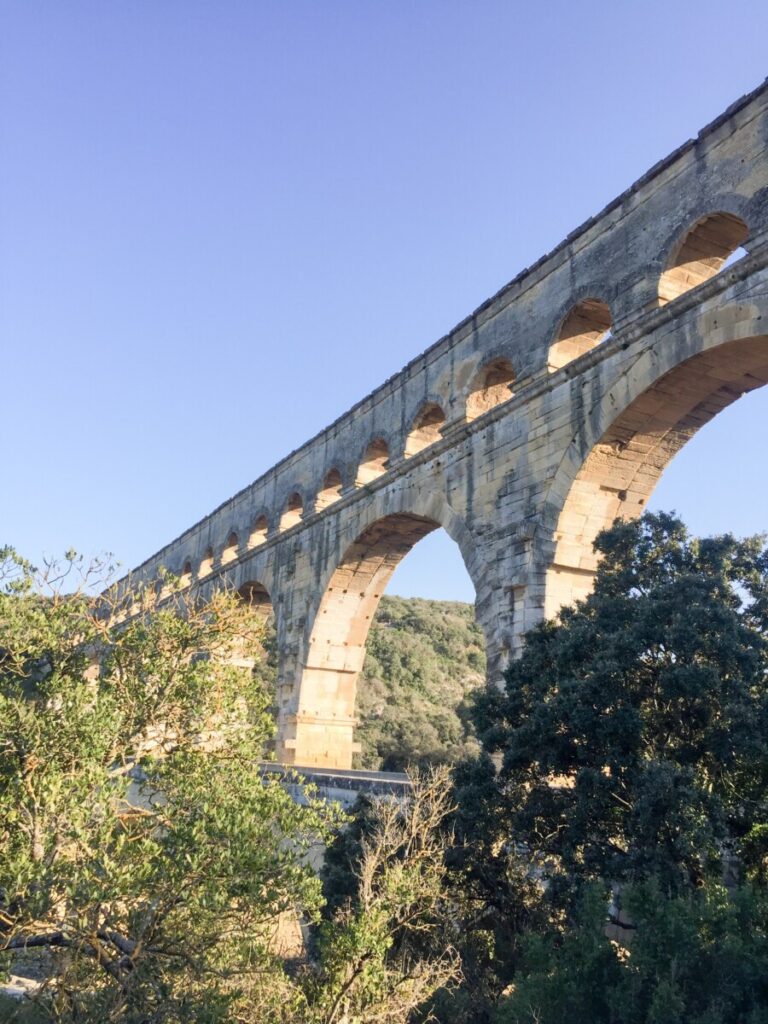
6. Safety, Maps & GPS
Make sure your car is in good condition and carry essentials like a spare tire, safety vest, and first-aid kit. Having water and snacks is smart in case of traffic jams.
Some French cities require an emissions sticker (“vignette”) for city driving. Lyon, Dijon, Strasbourg, and Montpellier are a few examples. We’ve never gotten one, and I’m not sure how strict they are with foreign cars, but check the regulations beforehand.
Most cars now have GPS, but it’s always smart to check a physical map. Knowing which major city you’re heading toward helps in case the GPS picks a weird route. We learned this lesson when our GPS tried sending us to Koblenz… in Poland instead of the Koblenz in the Moselle valley.
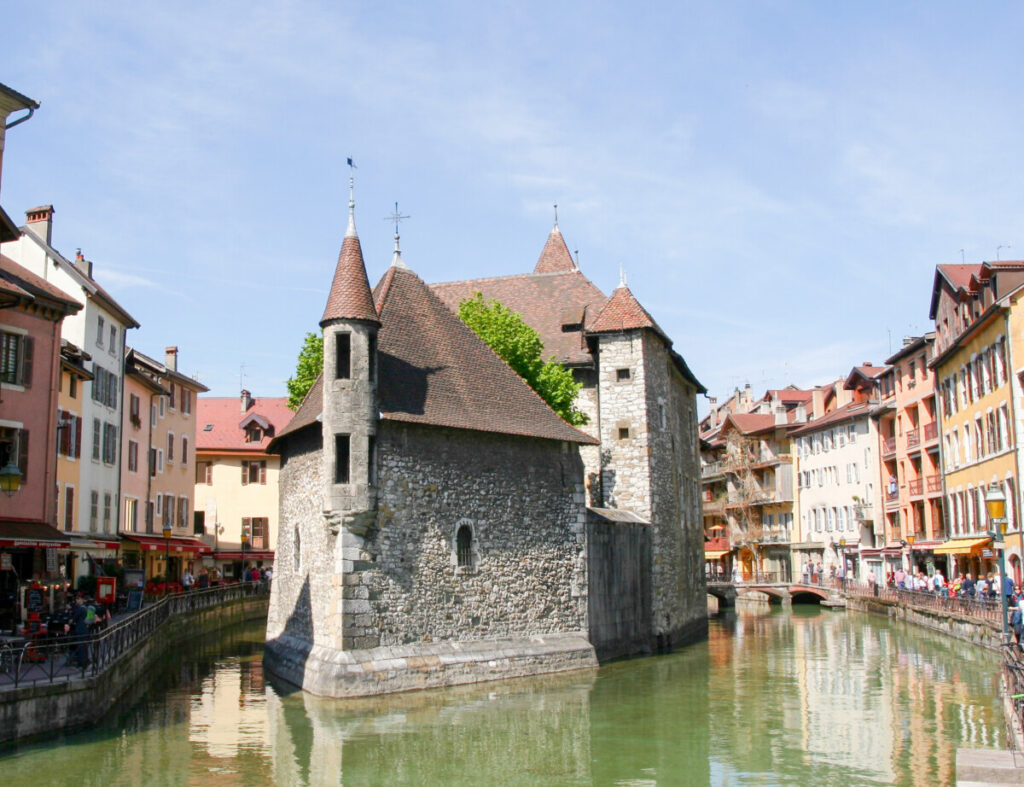
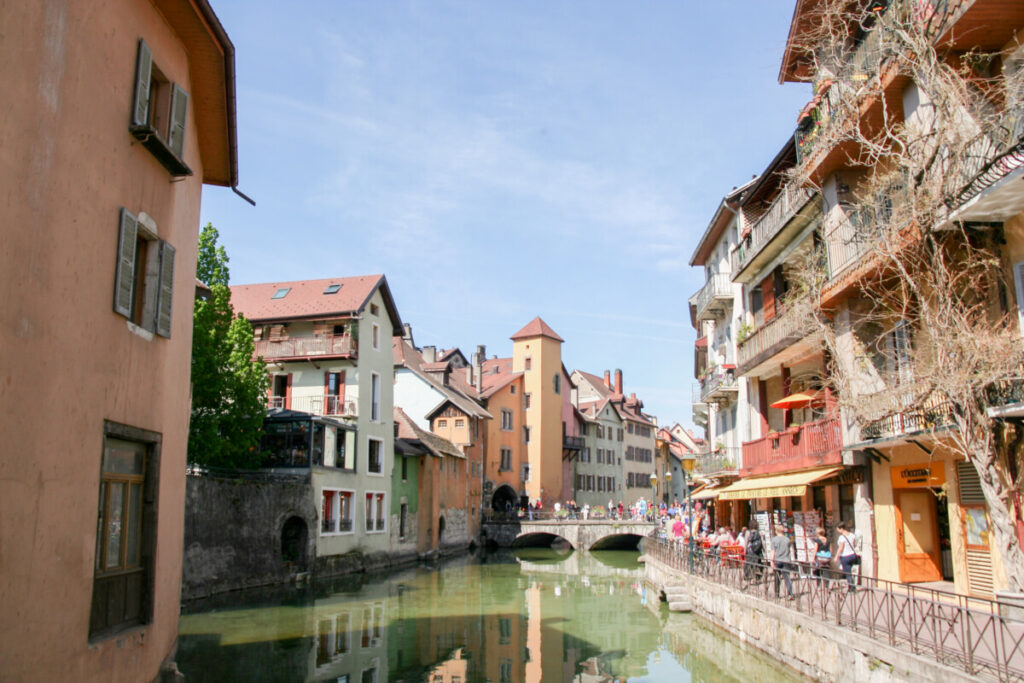
A physical map can also direct you to “green routes” which often are the scenic routes. Consider getting off the motor way for a part of the trip to experience nature.
7. Food
French rest stops have better food than in Norway. But when we have time, we prefer exiting the motorway for a long lunch in a charming town like Dijon, where we enjoyed fantastic food and bought mustard.
Be aware of meal times: restaurants in small French towns only serve lunch from 12 to 2 PM, and dinner service typically starts at 7 PM or later.

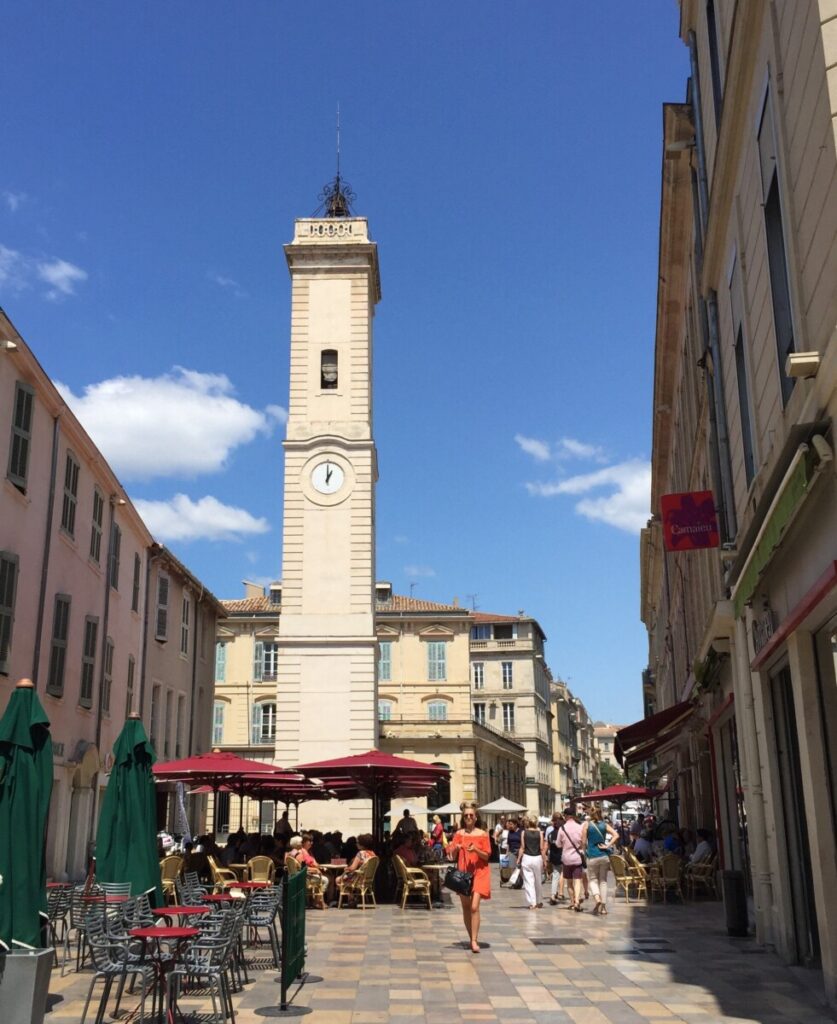

8. Costs
Driving to France isn’t cheap. Fuel, tolls, ferries, and hotels add up. But if you’re staying for weeks, renting a car and flying can be even pricier. Last summer, we drove down with one overnight stop and took two on the way back. Even with those costs, we saved money compared to flights and car rental. Plus, we could bring back a lot more wine!
We have spent around 200 euros on the toll roads including bridges in Denmark. Gas has been around 1000 euros, but we have a hybrid car with very high consumption. Hotels can be found for between 100 and 150 euros per night for two people.

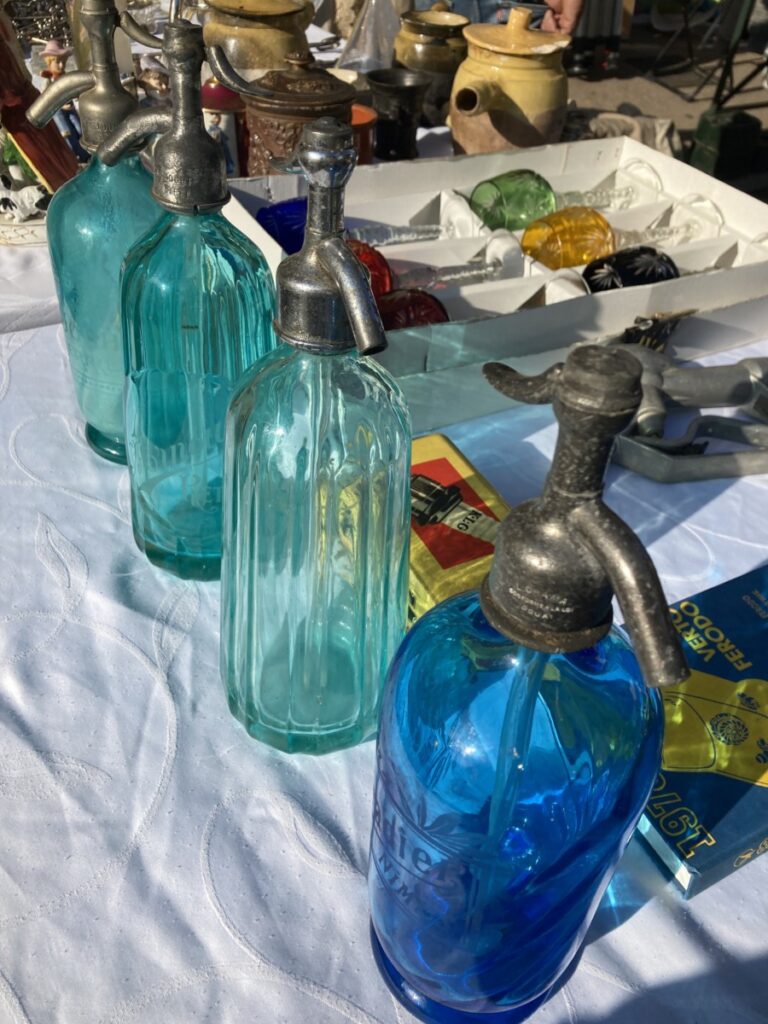

If you love antiques, consider visiting Pézenas during its biannual market or exploring L’Isle-sur-la-Sorgue, France’s antique capital.
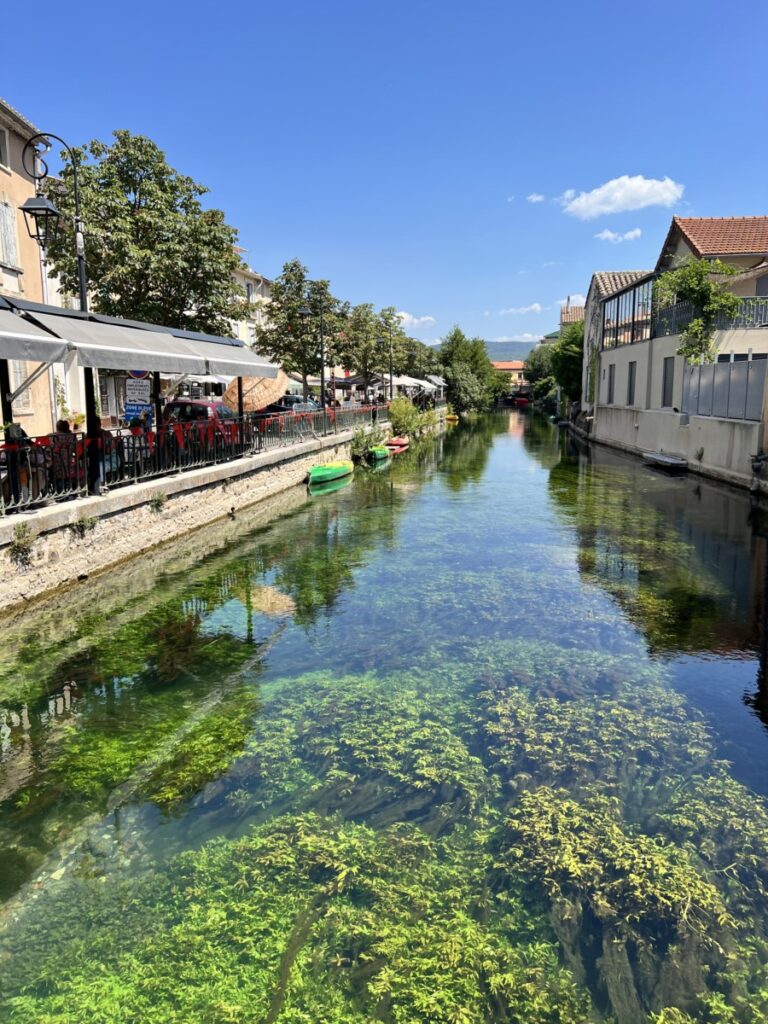

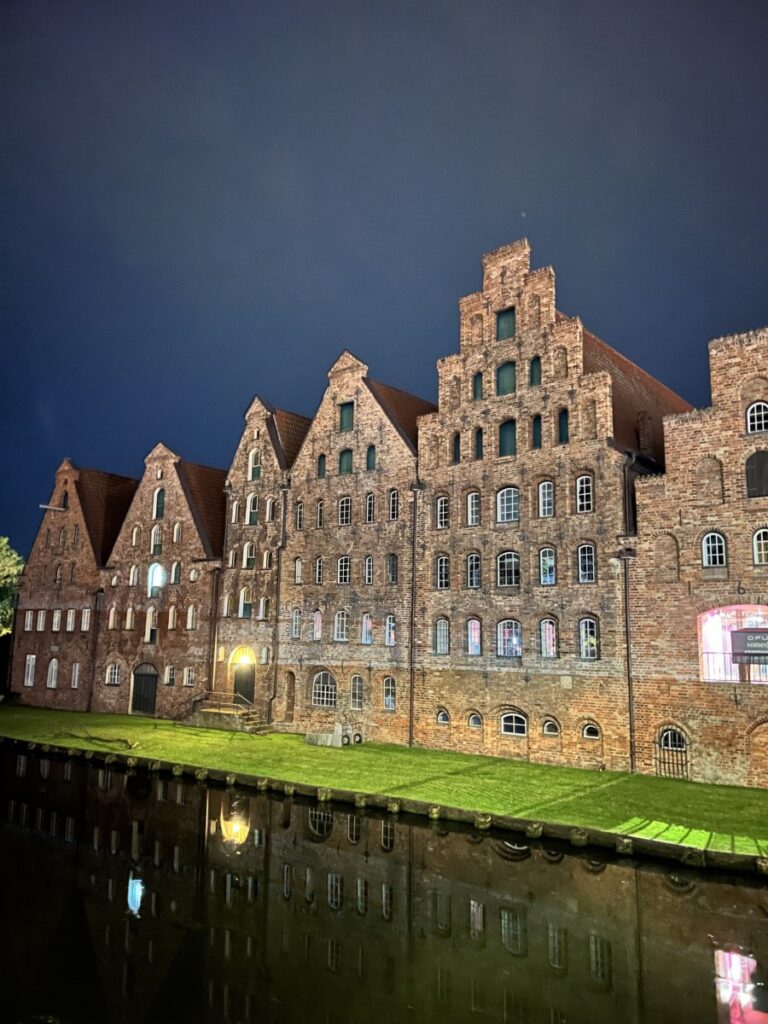
9. Practical Tips
We travel with a 12V cooler, which keeps drinks and food fresh. It’s also handy for bringing back French delicacies.
We’ve driven a hybrid car with a small fuel tank, stopping every two hours to refuel and stretch. EV charging stations are plentiful and rarely busy, so electric cars are a viable option.
Whether you want to race down quickly or take a leisurely road trip, plan ahead and enjoy the ride!
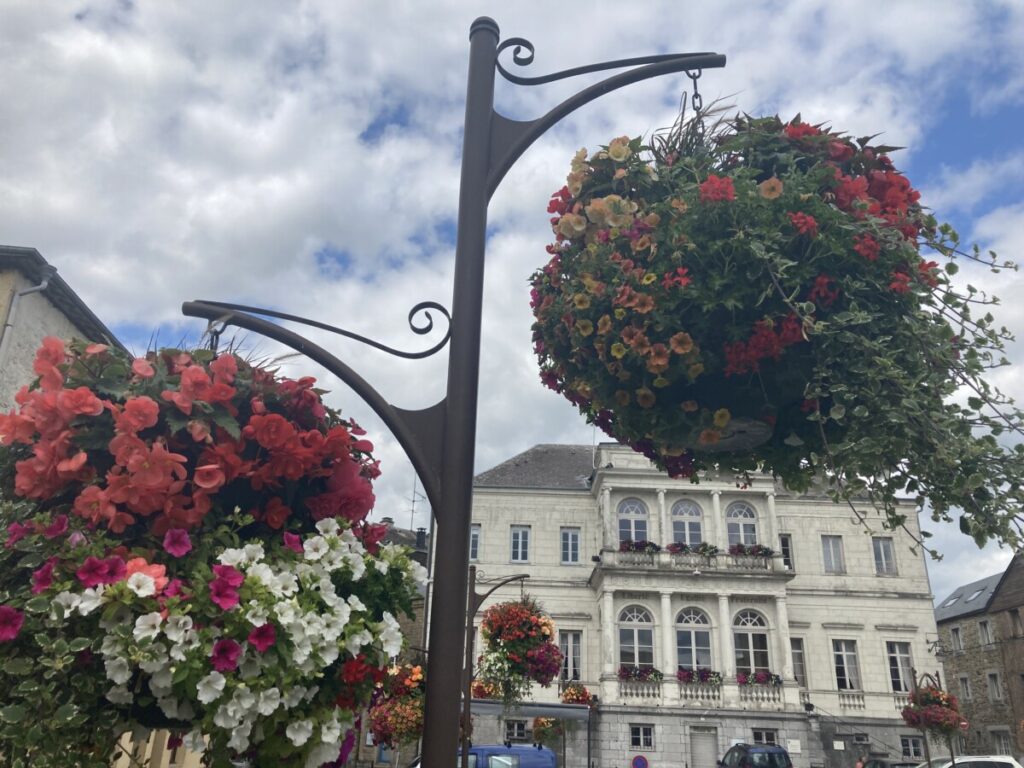

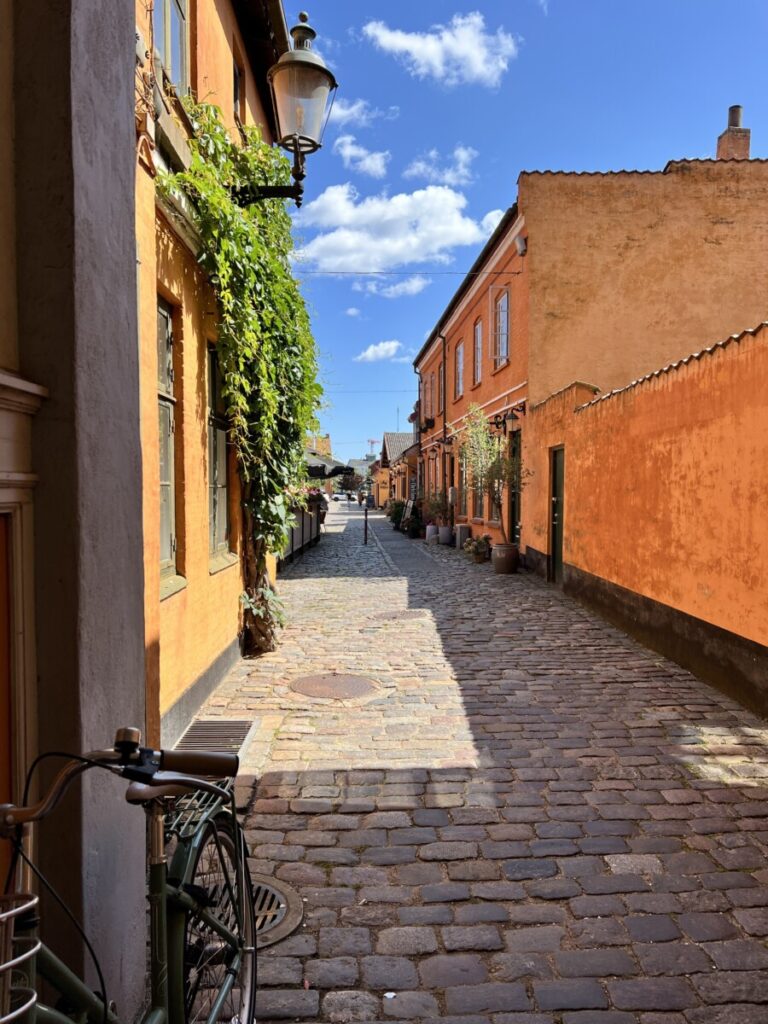
Spør meg hvis du lurer på noe om bilkjøring til Frankrike eller hvis du ønsker hjelp til å planlegge en tur til Frankrike.
Need help planning your French road trip? Check out more tips on my blog or follow me on Instagram (@catrines.reiser) and Facebook (Catrines Reiser).
